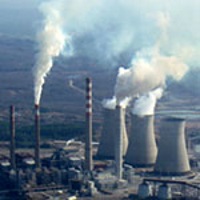Home Heating Bills Spike as Temperatures Plunge Across Alabama
The Tennessee Valley Authority is asking consumers to reduce electric demand as arctic cold frosts Alabama, stretching the utility’s capacity to meet demand. They are asking homeowners to reduce indoor temperatures in homes with heat pump systems by setting thermostats to 68 degrees or less.
A low 14 degrees was recorded Friday morning at Birmingham Airport and 10 degrees at Huntsville Airport. TVA has every generating source online and demand will challenge the record set January 7 this year, when customers used 703 gigawatt-hours of electricity to keep warm during the first polar vortex.
Utility customers can expect to be frosted again when utility bills arrive next month. TVA spokesmen say customers should expect heating costs to spike by 40% or more.
Residential customers with electric heat pumps can take action to minimize the financial burden by lowering morning thermostat settings to 68 degrees or less, which will reduce the use of expensive Auxiliary heat, an electric resistance heater in the system. Customers should not use Emergency heat unless the heat pump has malfunctioned, because Emergency heat uses only electric resistance heat and bypasses the heat pump.
Residents will save money and energy by making only small adjustments to the thermostat of 1 degree as needed. However, even a small increment may engage Auxiliary heat and spike electric consumption.
Heat pumps don’t heat as well during extreme cold and the Auxiliary resistance heat makes up the difference between what the heat pump can deliver to meet the thermostat set point. The lower the thermostat, the less Auxiliary heat is required to meet demand. Residents can add extra layers of clothing to maintain indoor comfort during the cold snap.
Kerosene heaters should not be used indoors to avoid danger from carbon monoxide poisoning. Carbon monoxide is an odorless, colorless gas that causes flue-like symptoms and death. All homes should be equipped with a carbon monoxide detector that is less than seven years old. If a carbon monoxide detector alarms, seek immediate help and get out of the home until the source is identified.
During peak demand in January, TVA generated one-third of its power from coal-fired plants, about 20 percent from nuclear plants, 14 percent from combined cycle natural gas plants, 11 percent from hydroelectric dams, 10 percent from conventional gas turbines, 2 percent from wind farms. On January 7, TVA made up a 13% shortfall in capacity to meet demand with power market purchases, the most expensive source of energy for the utility.


Comments are closed.